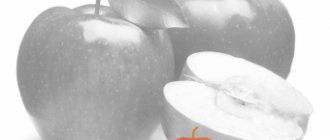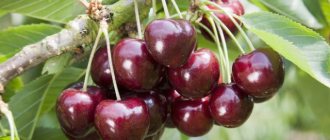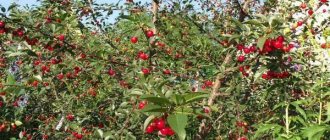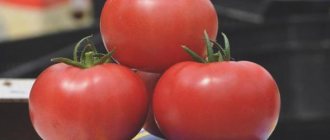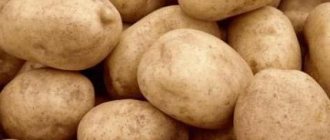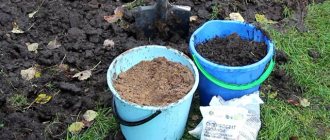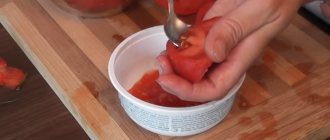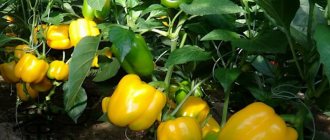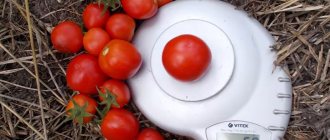Cherry varieties for the Moscow region
Professional gardeners recommend several species that top the rating for cultivation and large harvests:
- Narodnaya Syubarova - the variety is notable for the fact that its branches protect from snow and wind, and the tree itself takes root well.
- Iput - withstands weather conditions, bears a lot of fruit.
- Ovstuzhenka.
- Fatezh.
The following are varieties that survive well in winter in the region:
- Here we go.
- Homestead yellow.
- Gronkavaya.
- Red hill.
- Ovstuzhenka.
- Raditsa.
- Chermashnaya.
- Valery Chkalov.
- Fatezh.
- Revna.
- Tyutchevka.
- Veda.
- Orlovskaya pink.
- People's Syubarova.
- Michurinka.
- Bryansk pink.
- Gift for Stepanov.
- Leningradskaya black.
Types of cherries for the Moscow region
In the Moscow region, in most cases, self-sterile cherries are grown; some of the common species are self-fertile. If we talk about the size of the tree, then most of the species are medium-sized, but there are tall ones.
Winter-hardy cherry varieties for the Moscow region
It is very important to choose a variety that can withstand harsh winters. Despite the fact that the microclimate of the Moscow region is special and relatively warm, the number of abnormally cold winters is growing
To prevent the tree from dying in the first years of growth without starting to bear fruit, you need to know which varieties deserve attention:
- Here we go.
- Homestead.
- Gronkavaya.
- Red hill.
- Ovstuzhenka.
The best self-pollinating cherry varieties for the Moscow region
If a gardener chooses one variety to grow in the garden, then he needs to choose one that will self-pollinate.
The first places in the ranking were:
- Fatezh.
- Valery Chkalov.
- Here we go.
- People's Syubarova.
- Cheremashnaya.
- Ovstuzhenka.
- Revna.
- Tyutchevka.
Sweet cherries for the Moscow region
If children will feast on the berries, or they prefer to make compote from them, then it is better to choose sweet varieties. This berry will be pleasant to eat without adding sugar. Sweet varieties include Iput, Gronkavaya, Raditsa, Valery Chkalov, Tyutchevka, Veda, Bryanskaya Rozovaya, Podarok Stepanov.
The best varieties of low-growing cherries for the Moscow region
In the Moscow region, mainly medium-sized varieties are grown. Although dwarf trees are very convenient. You can easily pick berries from them. But such a tree is not so strong. Its branches cannot withstand strong winds for long. Relatively low varieties: Iput, Gronkavaya, Krasnaya Gorka, Raditsa, Tyutchevka, very low tree varieties Veda, Michurinka, Bryanskaya pink, Gift to Stepanov.
Varieties of yellow cherries for the Moscow region
Yellow cherries do not have such a bright taste, they are not as sweet compared to bright red and even almost black berries. But yellow varieties have also gained popularity and are actively grown in the vast expanses of the Moscow region. What are these varieties?
- Homestead yellow, the most common.
- Orlovskaya Amber.
- Drogana.
- Denissen.
- Leningradskaya.
Red, black, pink cherries for gardeners in the Moscow region
Everyone is used to seeing red berries, but some varieties have a lighter pink hue, distinct red or even black. Typically, black varieties have a brighter taste, a honey-sweet hue, and meatiness.
- Leningradskaya.
- Gift for Stepanov.
- People's Syubarova.
- Tyutchevka.
- Revna.
- Raditsa.
- Red hill.
- Fatezh.
- Orlovskaya pink.
- Bryansk pink.
- Michurinka.
- Bryansk pink.
- Gift for Stepanov.
- Leningradskaya black.
Bush cherries in the Moscow region
Bush varieties are not grown in the Moscow region. All options that can withstand weather conditions and soil conditions are medium-sized. The most common bush cherry variety is Melitopol. However, it grows in the south of the country, and the weather of this region is not suitable for it.
New varieties of cherries for the Moscow region
Relatively recently, Iput, Raditsa, and Fatezh have been grown in the Moscow region. But Narodnaya Syubarova has always taken root in all regions of Russia. Thanks to the miracles of selection, many other varieties have been adapted to this area.
What variety of cherries is best to plant in the Moscow region?
From the proposed options, it is difficult to choose the variety that will be more suitable for the Moscow region. Each of them has its own positive qualities and disadvantages. Fatezh and Narodnaya Syubarova are the strongest and most frost-resistant trees. The varieties are distributed throughout all regions of Russia. Strong branches resist wind and snowfall. But Iput resists fungi, and its yield is one of the highest - up to 35 kilograms.
Description and characteristics of fruits and trees
Early cherry Ovstuzhenka is popular among gardeners in Russia and is often planted in home gardens. The wide popularity of the new variety is explained by its unpretentiousness in cultivation and the fact that cherries already at the beginning of summer please the owner with an early harvest of delicious berries. Mass fruiting of young trees usually begins in the fifth year, but the first berries can be tasted already in the third year of the growing season.
Ovstuzhenka shows good resistance to diseases caused by fungal spores (coccomycosis and moniliosis), and is relatively resistant to klyasterosporiosis and the formation of sunburn on the bark in winter.
Did you know? In Japan, during the flowering of the cherry orchards, the national holiday Hanami is celebrated. For Japanese youth, this holiday is a symbol of the transition to a new stage in life: finishing their studies at a university or school, searching for their first job.
Crown height and density
The cherry tree is small, compact, and grows quickly. It has a sparse crown, shaped like a ball. The branches of the cherry tree are spreading and raised upward. The thickness of young shoots of the current year does not exceed 1 cm, adult branches have an average thickness (from 5 to 8 cm). The four-meter trunk and branches are covered with smooth dark brown bark.
The buds on the shoots are large, oval in shape, with a pointed apex, located on the branches at an acute angle. The buds begin to swell in the spring, in March, they bloom as soon as the outside temperature rises to +10... +12°C. The leaves of the Ovstuzhenka cherry are large, oval, with a sharp tip. The green leaf plate is smooth, there are small teeth along the edges of the leaf. The leaf is attached to the branch by a short petiole.
During flowering, within a range of 10 m from the growing cherry tree, the air is saturated with a sweet aroma, attracting insects for pollination
Taste qualities of fruits
Ovstuzhenka cherry berries are round-oval, large. The color of the skin and pulp of the berries has a deep shade of red wine. The pulp is juicy, not watery, dense, has a sweet taste and rich aroma. The berries can weigh from 4.2 to 7 g. But it should be recognized that the greater the number of berries set on the tree, the smaller they will be. Abundant watering and timely application of fertilizers also have a positive effect on the mass of berries.
The berry comes off the long stalk without damaging the fruit (dry tear-off), which makes growing berries of this variety commercially profitable. There is a seed inside each berry, its weight occupies approximately 6% of the mass of the entire berry. The variety is not characterized by fruit cracking, even during very rainy periods.
Did you know? A cheerful literary hero, a liar and an inventor, Baron Munchausen surprised incredulous listeners with an incredible story about a cherry tree that grew on the forehead of a deer after shooting a cherry pit from a gun.
Frost resistance and drought resistance
Sweet cherries are very sensitive to sub-zero temperatures, but this variety has good frost resistance and can withstand (for short periods) temperatures down to -18...-20°C. During flowering, the Ovstuzhenka variety reacts very painfully to low temperatures; flower falling begins already at an air temperature of +2°C.
The berries of this variety are large, they are easy to pick, but if the crown is not thinned out due to the abundance of pagons, picking will still be complicated
Pollinators and productivity
Gardeners evaluate Ovstuzhenka cherries as a variety with high yield potential. With good care, an adult ten-year-old tree produces up to 30 kg of juicy berries. Trees up to 10 years old bear fruit in the amount of 15–16 kg per tree.
The variety is not self-fertile, so it needs pollinating trees growing nearby. The following cherry trees are suitable for pollination: Tyutchevka, Pink Pearl, Iput, Bryansk pink, Revna. Pollinators are planted from this variety at a distance of 30 to 40 m.
We recommend reading about another mid-early cherry variety, Fatezh.
Advantages and disadvantages of the variety
The cherry variety Ovstuzhenka has both positive and negative features.
- Advantages of the variety:
- annual fruiting;
- large fruit;
- delicious berries;
- early maturation;
- good quality berries;
- resistance to some crop diseases;
- transportability.
- Disadvantages of the variety:
- need for other trees for pollination;
- flower stalks are afraid of low temperatures.
Description of culture
Usually, when it comes to cherries, you expect to see red or burgundy berries. But it was not in vain that breeders tried to develop varieties that produce yellow fruits. They have a number of advantages:
- increased productivity;
- excellent adaptation to weather conditions;
- fruit juiciness;
- excellent taste;
- minimal risk of allergic reactions when consumed.
All these advantages are complemented by an amazing appearance: plants hung with fruits will decorate the garden. The height of yellow cherry, as a rule, is 5-7 m. It is characterized mainly by the spherical structure of the crown, the strength and roughness of the skeletal branches. Growth is even too active; it has to be delayed by pruning and forming cherries. The yellow color of the fruit varies widely: there is a light creamy tone, and a golden one (as if the berry is made of amber).
Care
The cherry variety Chermashnaya is unpretentious in care, the main measures are:
- watering;
- soil fertilization;
- pruning branches;
- shelter for the winter.
It is best to prune in spring, before buds appear.
Care for cherries is carried out at the same time as other garden trees. Watering is increased more frequently during flowering and fruiting periods, and soil fertilization is carried out according to plan. Branch pruning is also carried out only once a year.
Watering
Chermashnaya cherry does not like a lot of moisture. Therefore, it is planted in regions with a moderate rainy season. Watering a young seedling is carried out every few weeks: the amount of moisture added directly depends on the time of year of planting. If planting in the fall, watering work is extended until October, if in the spring, watering is done before the arrival of winter.
No watering is needed in winter. Irrigation work is restored in early spring, during the planting of young seedlings. Add 2-3 buckets for a young tree and 4-5 for an adult. The older the crop, the more moisture it needs.
If there is too much moisture (it was a rainy summer), additional drainage should be done to protect the root system from rotting. In the hot season, moisten the soil as it dries out. In cases where the foliage begins to dry out, you can carry out additional watering through a spray bottle.
When planting a cherry seedling, saltpeter is added to the soil to improve the quality of the soil.
Fertilizer
During planting, superphosphate and saltpeter are added to improve soil fertility. You cannot use manure or urea on a young seedling, otherwise it will not be able to grow properly. Fertilizer is applied only in early spring or after harvesting, so that young branches do not start growing and do not draw out all the juices from the rhizome. In the first year, nitrogen fertilizers are not used: the first time fertilizing is done for 2-3 years, then once a year regularly.
Organic matter is used to improve the growth of cherries once every 2-3 years and only after the flowering period. When applying mineral fertilizers, watering is carried out immediately. The tree is not fertilized for the winter. In order for Chermashnaya cherries to grow faster, you can make a flooring of fertilizers in the winter that will protect the root system from frost.
Trimming
Cherries of the Chermashnaya variety grow on the sides, so it is necessary to regulate the length of the branches. Pruning gets rid of old and broken branches that suck moisture from the tree. Trim diseased branches.
After pruning, the cut site is thoroughly treated with a disinfectant solution. The procedure is carried out in the spring before the first buds appear: as soon as buds or inflorescences form, the branches cannot be cut. The tree is not pruned for the winter - all internal processes slow down, and the tree takes longer to recover.
Reviews from summer residents about the variety
Alexey, 38 years old, Tver: “I planted the Chermashnaya variety of cherries 6 years ago. The seedling took root easily and quickly. I carried out the work in early spring, before the buds formed, applied fertilizing, and closer to summer the tree blossomed. It is growing rapidly. Every year I trimmed the shoots to prevent it from growing tall. Started producing berries last year. They taste great and are yellow in color. We didn’t try to store everything; everything we collected was immediately eaten and processed. The jam turns out very tasty.”
Artem, 56 years old, Chelyabinsk: “This year I bought several Chermashnaya cherry seedlings at the market and planted them next to the pollinator. Planting was done for the winter. Prepared the hole. I planted it and mulched it. I insulated it for the winter because I was worried that it would freeze. In the spring, buds began to form, and by early summer it bloomed. I hope the variety will justify itself.”
Soil requirements
If the soil is heavy and acidic, it should be pre-fertilized with minerals. Crushed limestone and slaked lime are suitable. To extinguish lime, just add water. Soil deoxidation should be done in the fall.
The Cheremashnaya variety is optimally suited to soils that have neutral acidity. The plant does not like swampy lowlands. As a result, it is affected by fungal and bacterial infections. To drain the soil, you can install a drainage system in your garden plot.
The cheapest and easiest way is to install brick or clay drainage. To do this, trenches are dug throughout the area. They are covered with large crushed stone, turf, and soil. After this, the surface of the area must be leveled. You can use pipes with holes drilled in them. They must be securely sealed and protected from contamination by debris.
Landing Features
Before planting a young seedling, several important points should be completed: choose the ideal place, treat the area with fertilizers, etc.
Planting young cherries is recommended by experts in early spring. This is worth remembering when growing Chermashnaya cherries, despite the high frost resistance of the variety.
Choosing a suitable location
An ideal site would be one with good air flow and normal access to sunlight, but not a low-lying one. The soil is recommended to be loose with good moisture permeability, no closer to groundwater than 1.7 m. Dense soils are strictly not suitable: peat, sand, clay. Soil acidity should not exceed pH 6.5.
What crops can and cannot be planted next to cherries?
Nearby you can plant varieties that are pollinators for Chermashnaya cherries, for example cherry, it will act as a pollinator, like other types of cherries. Stone fruit trees require separate planting from other fruit varieties. It is not recommended to plant it near bushes. Also, cherries can ruin an apple tree if they are in close proximity.
Selection and preparation of planting material
Some gardeners make cuts at the tips of thick roots just before planting in the ground.
Important! This should be done very carefully and with a sharp instrument to prevent the root from being bruised, otherwise it will rot. It is best to buy seedlings in nurseries and specialized stores
It is best to buy seedlings in nurseries and specialized stores.
What you should first pay attention to when choosing planting material for the yellow cherry variety Chermashnaya:
- Roots. They should not be frozen or dry.
- The root length is at least 25 cm.
- The presence of a sufficient number of fibrous roots.
- White color of the root in section.
- Check to see if there are any growths or swellings on the roots.
- The trunk of a young plant should have a smooth, undamaged texture.
- The ideal age of a seedling is 2 years.
- Leaves. If they are present, the plant may be dehydrated.
- If the root is in the ground, you need to make sure that it is in order.
Landing algorithm
First of all, you need to prepare a place for planting. This should be a recess approximately 90x90x90 cm. A small mound should be left at the bottom, and a support should be hammered in at a short distance from the middle. Next, the seedling is covered with earth.
Important! The neck of the cherry root should rise above the soil at a height of 5 to 7 cm. After covering it with soil, you need to lightly trample it with your foot and make a border in a circle at a distance of 25 cm from the seedling
At the end, be sure to water the young cherries with a sufficient amount of water (about 3 buckets). You can add compost, ash or peat to the mound
After filling it with soil, you need to lightly trample it with your foot and make a border in a circle at a distance of 25 cm from the seedling. At the end, be sure to water the young cherries with a sufficient amount of water (about 3 buckets). You can add compost, ash or peat to the mound.
Subsequent care of the crop
Just like planting and caring for Chermashnaya cherries should be proper. Before the tree enters the period of fruiting in the first years, 1/5 of all shoots should be cut off. You can fertilize cherries in the fall with superphosphates. Calculation: approximately 2-3 tablespoons per 1 square meter. m crown projection and water generously.
Harvesting
You should start harvesting Chermashnaya cherry fruits when the berries are fully ripe and filled with sweet juice, but the stalk is still green. It would seem that picking a cherry from a branch is as easy as shelling pears. But not everything is so simple. It turns out that if you pull the stem carelessly, you can easily break off the bouquet branch. It will no longer grow in the same place, which means the number of berries next year will decrease.
You need to start harvesting only in dry weather. Cherries are a very delicate berry and if picked wet, they will quickly begin to spoil. Fruits with tails last a little longer. But it’s better not to pull the stalk. You can carefully pinch off berry by berry from the main bunch; it is best to use scissors, it’s safer and faster. The cherries must be sorted, preventing damaged fruits from getting into the main mass. Placed in containers of small volumes - up to 5 kg.
Chermashnaya cherry is unusually juicy and tender
Chermashnaya cherry belongs to the dessert varieties. It is distinguished by thin skin and delicate juicy pulp. This berry is not suitable for long-term storage. Transporting it over long distances is also not advisable. To properly prepare fruits for short-term storage, they need to be cooled for a day or two at a temperature of 6–80C. This way you will avoid rapid molding of the crop. Chilled fruits scattered in a thin layer should be stored at a temperature of -10C and a humidity of 80–90%.
Chermashnaya berries, healthy and tasty, are best consumed fresh. They can also be included in fruit salads or decorate desserts. The fruits are not very suitable for making jam, but compotes and cherries in their own juice are excellent.
Four conditions
Sweet cherries in Central Russia require more careful attention from gardeners than traditional fruit crops. To “make friends” with her, you need to fulfill 4 important conditions.
Choose the right variety and rootstock
In the garden you need to plant several mutually pollinating and simultaneously flowering varieties (at least 2-3), because it is very important that the flowers are pollinated. For successful overwintering and abundant fruiting, you need to select seedlings of recommended varieties with an increased reserve of winter hardiness, grafted onto frost-resistant clonal rootstocks
Cherry trees grafted on clonal Izmailovsky rootstock grow well and bear fruit regularly. They do not sprout, thus do not clog the site, and their lifespan is at least 20 years.
Successfully placed
It is very important to choose the right place for planting: it should be located at the top of a gentle slope in a southern or western direction. There should be enough sun and protection from strong winds
Strengthen the trunk. When planting, be sure to drive a strong stake into the soil and tie the seedling to it. In the first years, the above-ground part of the cherry tree grows very quickly, and the root system cannot keep up with it. In the second half of summer, long shoots with large leaves enhance the windiness of young trees. Without additional strengthening, the plants bend and, with strong gusts of wind, can break at the surface of the soil (a perfectly fused grafting site does not prevent this from happening). If the planting site is poorly protected from the winds, then it is advisable to preserve the supports until the trees are 4-6 years old.
Protect from winter sunburn. To protect it from the winter sun, the trunk will have to be whitened or wrapped with white non-woven material before wintering.
How to plant Chermashnaya cherries
For the Chermashnaya variety, it is important to choose the right place, time of work, and prepare the seedling and soil. Be sure to follow the planting pattern
How to choose a seedling
Planting material is purchased from specialized centers and nurseries. The fastest to take root is a one-year-old seedling 0.8-1 m high with a strong conductor and 3-4 side shoots. The quality of the plant's root system is assessed for the absence of mold, cracks, rotten areas and other defects. Before planting, remove all leaves. If the roots are dry, they can be immersed in clean water.
Planting dates and scheme
The best time to plant cherries is mid-autumn, when leaf fall ends and sap flow slows down. The work is carried out 3-4 weeks before the cold snap so that the seedling can take root in a new place. If winter comes early in the region, the tree is planted in early spring before the leaves bloom. First, they wait until the snow melts and the soil warms up.
The culture prefers sunny, flat or elevated areas. Lowlands where moisture accumulates are not suitable for cherries. A separate area is prepared for the seedling, away from apple, pear, plum and other fruit trees. Closer proximity to cherries is allowed.
Pit preparation
Cherries grow well in fertile, loose soils. Too heavy soil is not suitable for growing the Chermashnaya variety, so its composition is improved by adding sand. The selected area is dug up. The pit is prepared 1-2 months before planting. If work is postponed to spring, the pit is dug in the fall. This is necessary for soil shrinkage, which seriously damages the seedling.
Algorithm for planting Chermashnaya cherries:
- First, prepare a pit with a diameter of 60 cm and a depth of 70 cm.
- If the soil is not drained enough, 10 cm of crushed stone or expanded clay is poured onto the bottom.
- To fill the pit, prepare a substrate: fertile soil, 2 buckets of humus, 80 g of superphosphate and 50 g of potassium sulfate.
- The substrate is mixed and transferred to the pit, where 2 buckets of water are also poured.
- After shrinking, they form a small hill of fertile soil. Cherries are placed on top, their roots are straightened and covered with soil.
- The soil is compacted well. 2 buckets of water are poured under the seedling.
- The tree trunk circle is mulched with humus.
Characteristics of the variety
The Chermashnaya cherry has a remarkable fruit appearance. Before planting, you need to know about the yield and pollinators of the variety.
Appearance of Chermashnaya cherries
The trees grow to a height of 4.5–5 m. The crown is elongated and rounded, the main branches grow at right angles to the trunk. The foliage of the tree is average. The leaf blades are green in color with a glossy sheen. The leaves are oval-pointed in shape.
When opened, the buds are umbrella-shaped. The color of the buds is white.
The fruits are yellow in color. The weight of one berry is 3–5 g. The structure of the pulp is soft and juicy. The skin is thin. The stone is round and can be separated from the pulp easily. The taste is sweet, with a slight sourness.
Productivity
Fruiting begins 3–4 years after planting the tree. In the first years, farmers remove 11–13 kg of fruit from one plant. The yield of the variety during mass cultivation is 15–23 tons per 1 hectare of plantings.
At the peak of fruiting (6–7 years after planting), 25–30 kg of crop is harvested from the tree.
Pollinators
The variety is self-sterile. Without pollination, trees will not produce fruit. To obtain a harvest, pollinating varieties must be planted next to the plantings. These include:
- And the way;
- Fatezh;
- Chocolate girl;
- Bryansk pink;
- Leningradskaya black;
- Crimean;
- Raditsa.
Advantages and disadvantages
Chermashnaya cherry has both advantages and disadvantages.
- Among the advantages of the variety: cold resistance;
- rapid ripening;
- abundant fruiting;
- high taste qualities;
- resistance to moniliosis and coccomycosis.
- Gardeners call disadvantages: the need for pollination;
- cracking of the peel due to waterlogging;
- poor keeping quality.
Fruit
The berries grow quite abundantly and are of medium size. The weight of one fruit reaches from 3.8 to 4.5 grams. The shape of the berries is round. The color is light yellow. At first glance it may seem that they are unripe, but this is a feature of the variety that does not affect the taste in any way.
But it is pleasant, non-specific, sweet with slight sour notes. Experts in the field of product tasting left their reviews about the Chermashnaya cherry variety. In their opinion, the berries deserve a high rating - 4.5 points on a five-point scale. Inside the fruit is a small round bone. Its surface is smooth, and it is easily separated from the berries.
Features of cultivation and care
Depending on the climate and the desire of the farmer, cherries can be planted in April or October
In addition, pay attention to the following subtleties of planting and caring for the crop:
Selection of location and planting material
Before planting, select a site suitable for the variety, the optimal indicators of which are:
- illumination;
- ventilation;
- a slight elevation so that there is no stagnation of water during the rainy season;
- loamy or sandy soil;
- soil acidity is approximately 6.5 pH;
- location of groundwater no higher than 1.5 m to ground level.
- Dig the area to a depth of 20 cm.
- When digging, add 20 kg of compost, 180 g of phosphorus and 120 g of potassium fertilizer.
- Dig a planting hole 1 m wide and 0.9 m deep.
- Mix the top layer of soil from the pit with a bucket of compost, 80 g of potash and 200 g of phosphorus fertilizer.
- Pour the resulting nutrient mixture into the planting hole and compact it.
- Prepare a solution of 450 g of lime and a bucket of water.
- Pour lime mortar into the bottom of the planting hole.
An important step when planting cherries is choosing a seedling. Planting material must meet the following criteria:
- age 1 or 2 years;
- straight trunk;
- the bark is not damaged, without rot or plaque;
- there are 3–4 branches;
- whole rhizome 30–35 cm long;
- the root system has 3–4 main roots;
- The root shoots are white when cut.
Landing
The agricultural technology of planting a seedling consists of the following stages:
- Form a small mound at the bottom of the planting hole.
- At a distance of 15 cm from the central point of the pit, drive a wooden stake up to 1.5 m high.
- Place the seedling in the hole and spread the roots over the mound.
- Fill the hole with soil so that the root collar is located 5 cm above ground level.
- Form a trunk circle with a diameter of 0.5 m.
- Water the plant with 3 buckets of water under the trunk.
- Mulch the soil with sawdust or peat.
- Tie the trunk to the stake.
Watering and fertilizing
In the first year after planting, the seedling is watered every 2 weeks. In subsequent years, the plant is irrigated four times during the growing season:
- at the moment of bud opening;
- 2 weeks after the end of flowering;
- 14–21 days before mass fruiting;
- Before the onset of frost, pre-winter moisture-charging irrigation is carried out.
5-6 buckets of water are poured under an adult tree. The amount of moisture may vary depending on the size of the tree and the weather.
There is no need to fertilize the plant for the first 2 years. The cherry tree will have enough nourishment added during planting. Then, before fruiting begins, the trees are fed twice: in May and June. Both times, urea is added to the soil in the amount of 20 g per 1 m² of soil.
After the start of fruiting, the crop is fertilized three times a year. Under one trunk add:
- at the beginning of the growing season in spring - 150 g of urea;
- in September - 100 g of potassium sulfate and 300 g of superphosphate;
- in November - 4 buckets of compost and 500 g of ash.
Pruning and crown formation
Crown formation and preventive pruning are carried out in the spring before the beginning of the growing season. Skeletal branches are formed into three tiers according to the following principle:
- In the second year of the tree’s life, 4–5 skeletal branches of the lower tier are left. They should be at a level of 0.6–0.7 m from the ground. The optimal distance between the branches is 20 cm. The remaining branches are shortened by half the length so that the conductor trunk is 15 cm above them.
- In the third year, the skeletal branches of the lower tier are left and 2–3 skeletal branches of the second tier are identified. A distance of 0.9 m should be maintained between the tiers. Non-skeletal shoots are cut by a third of the length so that the conductive trunk is 20 cm above them.
In the fourth year, the two lower skeletal tiers are left and the upper one is formed. It should rise above the middle tier by 0.9 m. The conductor trunk is shortened so that it is no higher than 20 cm from the upper tier. In the fifth year, the conductor is cut into a ring, non-skeletal growths are cut to half the length.
The formed tree is pruned annually for sanitary thinning purposes. Old, dried, broken and frozen branches are removed from the crown.
Preparing for winter
The cherry variety Chermashnaya is cold-resistant, but the trees should be prepared for winter. At the end of autumn, gardeners:
- lime the trunks;
- they wrap the trunks with spruce branches or netting to protect them from rodents;
- cover the plants with burlap or agrofibre.
Grafted plantings regardless of the time of year
The planting hole, prepared in the fall or 2 weeks in advance, must be fenced with a roll of earth. Pour a couple of buckets of water that has been left in the sun into the hole.
Pegs are additional support for a young tree
A small mound of soil is formed in the middle of the hole (it can also be formed while the planting hole is being prepared) and the planting process begins:
1Free the tree, or rather its roots, from the packaging.
2 Leaves, if any, must be carefully removed - the plant loses excess moisture through the leaves. If the leaves are removed, the tree will “focus” on the process of formation, growth and strengthening of the root system.
3The roots need to be straightened and trimmed if necessary. Spread the roots over the surface of the mound.
4Supporting the seedling with one hand and shaking it periodically, you need to cover the roots with soil.
5When the roots are covered, you need to water the plant with several buckets of water. When the soil has finally settled, add more soil to such a level that after throttling, the root collar of the tree rises 3-5 cm above the ground surface.
6The ground in the tree trunk circle needs to be leveled and mulched using straw, peat, humus or special materials.
Drive a peg into the center of the planting hole - this will be an excellent support for the young tree until it takes root.
What to plant under the trees: flowers, plants or vegetables? In the vegetable garden or garden in the shade (40+ Photos & Videos)+Reviews
Diseases and pests
The Chermashnaya cherry variety has a high immunity to pests and fungal diseases, however, if agricultural practices are incorrect, the trees may become infected.
Insect pests of cherries and methods of controlling them - table
| Pest | Description and nature of the lesion | Processing period | Preparations for treatment | Prevention |
| Cherry slimy sawfly | The insect is black with yellow-white stripes, up to 10 cm long. The caterpillar is dark green with a dark stripe on the back, up to 1.2 cm long. Females lay eggs on the underside of the leaf. In early June, spider cocoons and eaten leaves appear on the leaves. | Before flowering. | Karbofos, Iskra DE - according to the instructions. |
|
| July August. | Decis, Iskra-M - according to the instructions. | |||
| Cherry pipe maker | The beetle is dark green in color with a crimson tint, up to 10 mm long. Pests eat buds, flowers, leaves and fruit ovaries. | Before flowering begins. | Chlorophos, Metaphos - according to the instructions. |
|
| After flowering. | Aktellik, Corsair - according to the instructions. | |||
| Cherry aphid | Small insects measuring 0.6–4 mm. The larvae feed on plant sap. Signs of damage: a sticky coating appears on the leaves, on which sooty fungus can develop. The leaves curl, dry out and fall off. | Before the buds open. | Actellik - according to the instructions. |
|
| After flowering. | Fitoverm, Inta-vir - according to the instructions. |
Harmful insects in the photo
Cherry diseases and methods of combating them - table
| Types of diseases | Nature of the lesion | Processing period | Means for fighting | Prevention |
| Gray rot (moniliosis) | Shoots, leaves, flowers and fruits are gradually covered with a gray fluffy coating. The fruits become soft, and gray pads with fungal spores appear on the surface. | Before the buds open. |
|
|
| After flowering. | Bordeaux mixture 1%. | |||
| Brown leaf spot | In spring, yellow spots appear on the leaves. As they develop, they enlarge and become brown, covering the entire leaf. Leaves curl and fall prematurely. Spots may appear on the fruits, unripe berries fall off, and ripe ones take on an unnatural shape. | Before the buds open. | Copper sulfate 1%. |
|
| At the beginning of bud break. | Bordeaux mixture 1%. | |||
| After flowering 15–20 days later. | Bordeaux mixture 1%. | |||
| Clusterosporiasis (hole spotting) | In spring, round spots of light brown color with a red border appear on the leaves - 5 mm in diameter. After 7–10 days, the spots die off and holes form on the leaf. Small purple spots up to 3 mm appear on the fruits. As they develop, they become like brown warts from which gum oozes. The affected buds turn black and die, and round, cracking spots appear on the shoots. | Before the buds open. | Nitrafen 2% - wood and soil treatment. |
|
| After flowering. | Bordeaux mixture 1%. If necessary, re-treat after 15 days. | |||
| After leaf fall. | Bordeaux liquid 3%. |
